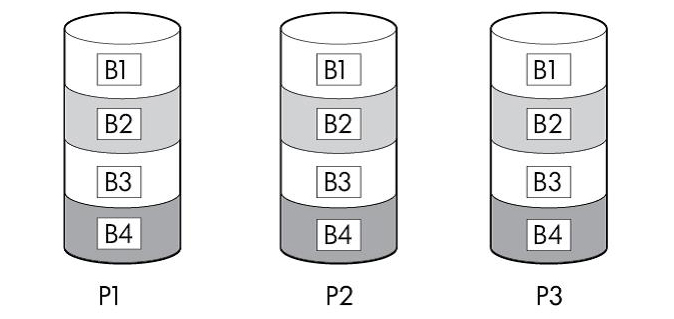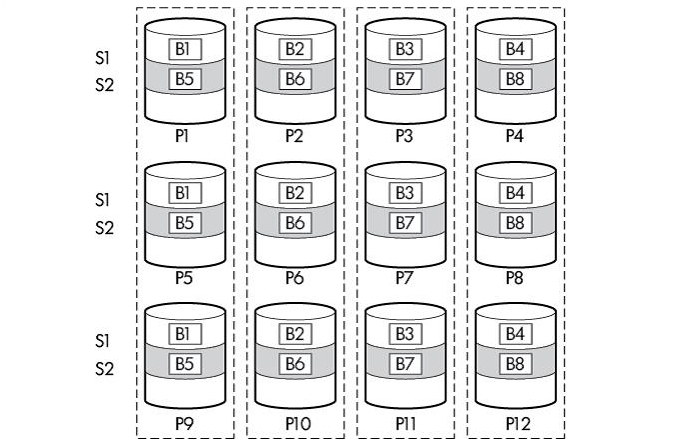RAID 10 (ADM) configuration
In RAID 10 (ADM) configurations, data is duplicated to two additional physical drives (not just one additional drive as in RAID 10). The usable capacity is C x (n / 3) where C is the physical drive capacity with n drives in the storage array. A minimum of three drives is required. When the storage array contains only three physical drives, the fault-tolerance level is known as RAID 1 (ADM).

When the array has more than three physical drives, they are mirrored in trios, and the fault-tolerance method is known as RAID 10 (ADM). If a physical drive fails, the remaining two drives in the mirrored trio still provide all the necessary data. Several drives in the array can fail, provided that no three failed drives belong to the same mirrored trio. The total drive count must be an increment of three.

This fault tolerance configuration allows high performance and higher resiliency than RAID 10 at the expense of usable capacity. Due to the load balancing across additional physical drives, this storage array configuration provides higher read performance. The resiliency levels are increased due to the additional copy of data. Up to two-thirds of the physical drives can fail, provided no three failed disks are in the same mirrored trio.